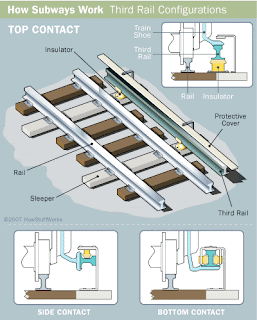 Science Park and Lechmere Station on the Green Line will be closed for six months, until December, while the MBTA works on badly needed renovations to rehabilitate the Science Park station. If you've ever ridden through this station, it was probably easy to see that the rehab will be well worth it. Once completed, it will be fully accessible for all riders and will be compliant with the Americans with Disabilities Act.
Science Park and Lechmere Station on the Green Line will be closed for six months, until December, while the MBTA works on badly needed renovations to rehabilitate the Science Park station. If you've ever ridden through this station, it was probably easy to see that the rehab will be well worth it. Once completed, it will be fully accessible for all riders and will be compliant with the Americans with Disabilities Act. Construction began on April 30th and will continue throughout the summer and fall. Improvements will include two new elevators, widened station platforms, replaced platform canopy roofs, and reconstructed stairways. In addition, upgrades to lighting, telecommunications, electrical, fire protection, fire alarm, signage systems, and station landscaping will also be made.
To make up for the suspended service, the MBTA is now running shuttle buses between North Station and Lechmere, also making stops at the Museum of Science and the Amy Lowell House. During peak hours and special events at the TD Garden, these shuttles will depart every four minutes, on off-peak hours, every ten minutes, and every twelve to fifteen minutes during night hours.
 So why bother closing the station for such a long time? The MBTA cites many reasons: One of the biggest is that it should significantly decrease the time needed for construction—by as much as six months. Much like the proposed Government Center renovation . Other reasons include increased safety for pedestrians and riders, cost reductions by eliminating the need for unnecessary power shutdowns and safety support, and a reduction in nighttime noise because the construction can be carried out during the day time.
So why bother closing the station for such a long time? The MBTA cites many reasons: One of the biggest is that it should significantly decrease the time needed for construction—by as much as six months. Much like the proposed Government Center renovation . Other reasons include increased safety for pedestrians and riders, cost reductions by eliminating the need for unnecessary power shutdowns and safety support, and a reduction in nighttime noise because the construction can be carried out during the day time.For more info, visit the MBTA's Project Page.















